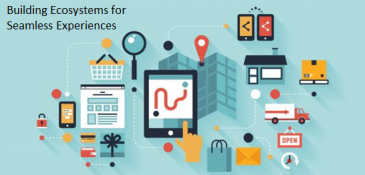
visual source: uxmag.com not text
In the first post of this series, Paul Hobcraft framed what we believe is an exceptionally important issue: innovation doesn’t really work the way we’d like it to. Far too often, innovation creates incremental, discrete products that don’t seem to drive customer engagement, don’t create disruption in the marketplace and don’t drive a significant amount of revenue or profit.
There are many reasons we could point to – poor understanding of customer needs, risk and uncertainty constraining innovation teams, lack of innovation process and training on the part of the innovation teams, little to no funding, and so on. These are common challenges that innovation teams face.
However, we believe that many innovation challenges stem not from a lack of internal knowledge or capability, but from misunderstanding the customer and his or her expectations about experiences. Customers today expect seamless experiences, supported, maintained and enabled by complex ecosystems of products, services, business models, channels, information, and complementary products and services. Customers aren’t interested or willing to acquire disparate products and services and integrate them. Increasingly customers prefer to acquire seamless experiences, and this expectation will dramatically change how companies innovate.
 We seem to be facing a major crossing-over point in innovation. We can either switch tracks and allow innovation to go on the slower line that continues to stop at all stations, picking up and dropping off, steadily working towards its final goal of “incremental delivery” or, we can decide to keep innovation on the fast track, picking up momentum because we need to treat innovation as ‘core’, essential and needed, to be delivering the growth engine our organizations are requiring today.
We seem to be facing a major crossing-over point in innovation. We can either switch tracks and allow innovation to go on the slower line that continues to stop at all stations, picking up and dropping off, steadily working towards its final goal of “incremental delivery” or, we can decide to keep innovation on the fast track, picking up momentum because we need to treat innovation as ‘core’, essential and needed, to be delivering the growth engine our organizations are requiring today.